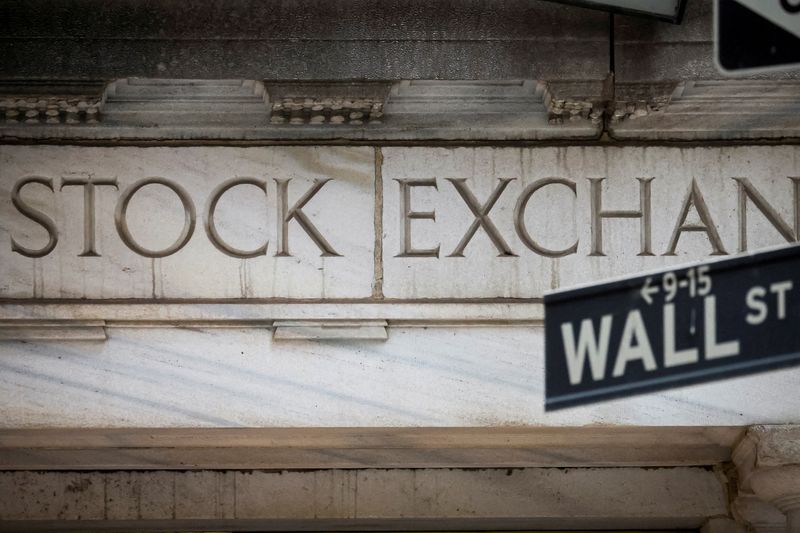(This Feb. 1 story has been corrected to fix the name of CIO in the "Going Private" section to Nicoll from Nicole)
LONDON (Reuters) - The end of the easy-cash era is over and its impact yet to be felt on world markets, hopeful that the pain of aggressive rate hikes and high inflation has passed.
U.S. and UK central banks are unwinding stimulus further by offloading bonds they hold, and the European Central Bank will join them soon. Nomura estimates the balance sheets of the three banks will shrink by $3 trillion this year.
Graphic: Bloated central bank balance sheets start to shrink https://www.reuters.com/graphics/GLOBAL-MARKETS/znpnbkeaypl/chart.png
Tech stocks and crypto currencies look vulnerable. They are among risky assets that soared as cash pumped out by central banks fighting weak inflation in recent years searched for a home.
"When you have unprecedented monetary tightening, the likelihood is that you get issues that are uncovered – that might be something hidden such as liquidity or something more obvious like pressures in the housing market," said Zurich Insurance Group chief market strategist Guy Miller.
We look at some potential pressure points.
1/ DARLINGS NO MORE
Once darlings of the easy-cash era, tech stocks are being shunned by many investors even after a January bounce as higher rates make it more expensive to take punts on the potential earnings growth of early stage or speculative businesses.
When economic uncertainty is high, investors often look for reliable returns from dividends to safeguard portfolios. That makes the likes of tech stalwarts such as Apple (NASDAQ:AAPL), whose shares trade on a dividend yield of less than 1%, look vulnerable.
"We're at a stage where very elevated valuations in markets have collided with much less supportive policy," said James Harries, senior fund manager at Troy Asset Management. "So, the outlook is darkening."
Tech firms are reversing pandemic-era exuberance, cutting jobs after years of hiring sprees. Google owner Alphabet (NASDAQ:GOOGL) plans to axe about 12,000 workers; Microsoft (NASDAQ:MSFT), Amazon (NASDAQ:AMZN) and Meta are firing almost 40,000.
Graphic: Big tech's earnings growth put to the test https://www.reuters.com/graphics/GLOBAL-MARKETS/mypmogzgmpr/chart.png
2/ DEFAULT RISKS
Concerns about corporate defaults are mounting as rates rise, although recession worries have eased.
S&P Global (NYSE:SPGI) said Europe had the second-highest default count last year since 2009.
It expects U.S. and European default rates to reach 3.75% and 3.25%, respectively, in September 2023 versus 1.6% and 1.4% a year before, with pessimistic forecasts of 6.0% and 5.5% not "out of the question."
Man GLG portfolio manager Michael Scott said markets have not fully priced in the risk of higher defaults.
Graphic: Corporate default rate may double in 2023 https://www.reuters.com/graphics/GLOBAL-STRESS/dwpkdegzdvm/chart.png
3/ GOING PRIVATE
Private debt markets have ballooned since the financial crisis to $1.4 trillion from $250 billion in 2010.
The largely floating-rate nature of the financing appeals to investors, who can reap returns in high single to low double digits, and became popular as plunging rates post-2008 boosted risk assets.
Now, a reality check: higher rates imply a heavier burden for companies as recession looms, casting a shadow over their ability to generate sufficient cash to pay ballooning interest costs.
"What surprises me is that you're almost back to complacency," said Will Nicoll, CIO of Private and Alternative Assets at M&G Investments. "We’ve gone from a position where three months ago everybody was talking about a credit cycle coming through for the first time in decades and now people appear to have forgotten that."
Graphic: Direct lending stellar growth https://www.reuters.com/graphics/GLOBAL-CREDIT/PRIVATE/lbpgggwlnpq/chart.png
4/CRYPTO WINTER
Rising borrowing costs roiled crypto markets in 2022. The price of bitcoin plunged 64% and around $1.3 trillion was wiped off the global cryptocurrency market cap.
Bitcoin has rallied recently but caution remains. The collapse of various dominant crypto companies, most notably FTX, left investors shouldering large losses and prompted calls for more regulation.
January brought a fresh wave of job cuts as firms brace for the so-called crypto winter, while the lending unit of Genesis recently filed for U.S. bankruptcy protection, owing creditors at least $3.4 billion.
Graphic: Pain in crypto land https://www.reuters.com/graphics/GLOBAL-MARKETS/lgpdknmayvo/chart.png
5/FOR SALE
Real estate markets, first responders to rate hikes, started cracking last year and 2023 will be tough with U.S. house prices expected to drop 12%.
Fund managers surveyed by BofA see China's troubled real estate sector as the second most likely source of a credit event.
European real estate is reporting distress levels not seen since 2012, according to data from law firm Weil, Gotshal & Manges.
How the sector services its debt is in focus and officials warn European banks risk significant profit hits from sliding house prices.
Real estate investment management firm AEW estimates the UK, France and Germany could face a 24 billion euro debt funding gap through 2025. Luckily, bank balance sheets are better positioned to absorb losses, so few expect a 2008 repeat.

Graphic: Distress in Europe's real estate sector rises https://www.reuters.com/graphics/GLOBAL-STRESS/byprlryzbpe/chart.png
($1 = 0.9192 euros)